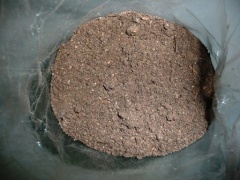Guano
| Infobox on Guano | |
|---|---|
| Example of Guano |  |
| Facts | |
| Origin | - |
| Stowage factor (in m3/t) | - |
| Angle of repose | - |
| Humidity / moisture | - |
| Oil content | - |
| Ventilation | - |
| Risk factors | - |
Guano
Contents
Description
Guano is the excrement (feces and urine) of cave dwelling insectivorous bats, seabirds, and seals. The ideal type of guano is found in exceptionally dry climates, as rainwater drains the guano of nitrates. Guano is harvested on various islands in the Pacific Ocean (for example, the Chincha Islands) and in other oceans (for example, Juan de Nova Island and Christmas Island). These islands have been home to mass seabird colonies for many centuries, and the guano has collected to a depth of many meters.
Guano is a nitrogenous organic fertilizer with a high content of phosphoric acid and a moderate proportion of potash. Shipped in bulk or in bags. Guano has a high nitrogen content which is partly fixed in a compound insoluble in water and partly in the form of ammonia. The ammoniacal portion of guano is readily dissolved in water and evaporates constantly from the whole mass.
It is therefore necessary that bagged guano to be stowed in such a manner as to prevent it from coming into contact with moisture. The nitrate and salts content of this substance is affected by rain or fresh water but a chemical analysis will not be a reliable test due to the fact that water seeping into the caves from which the guano is obtained very often affects the commodity before it is shipped.
Guano contains about 15% moisture and is subject to loss in weight by drying out.
The handling of guano calls for special care as it throws off a fine powder which, together with the ammoniacal odour, affects the respiratory tract.
Full information on this product is in the process of completion.











